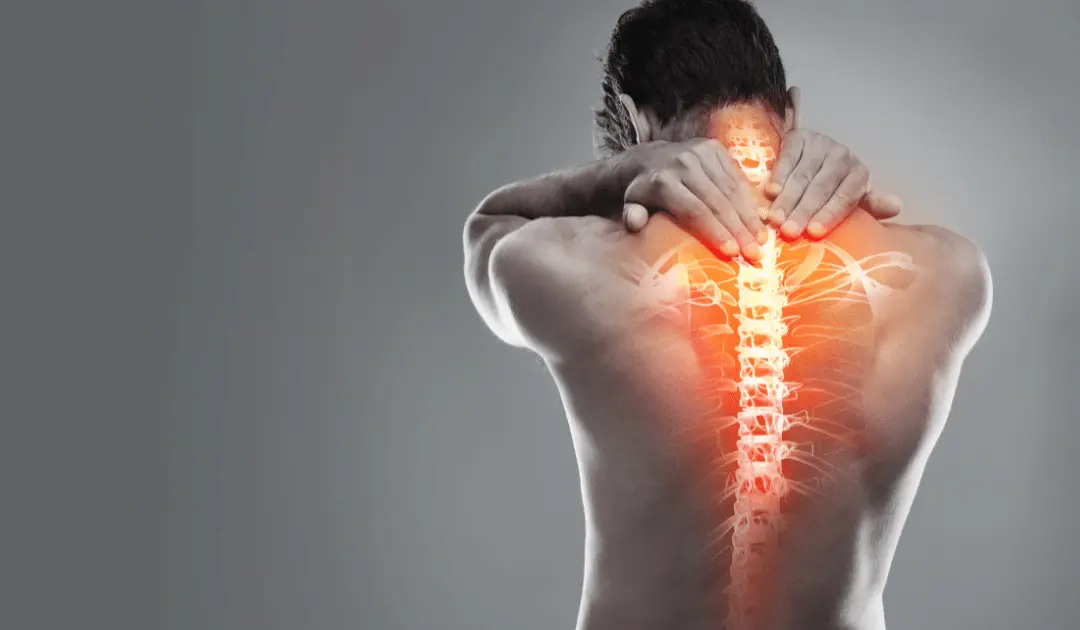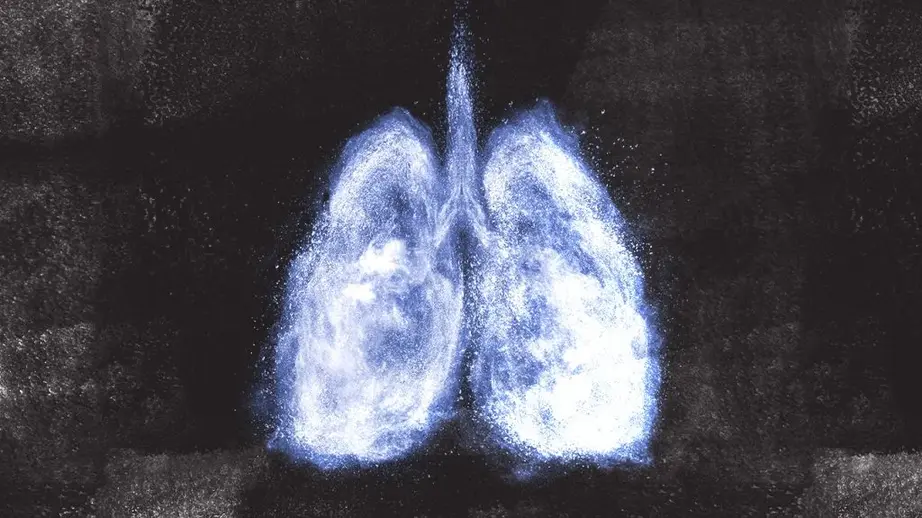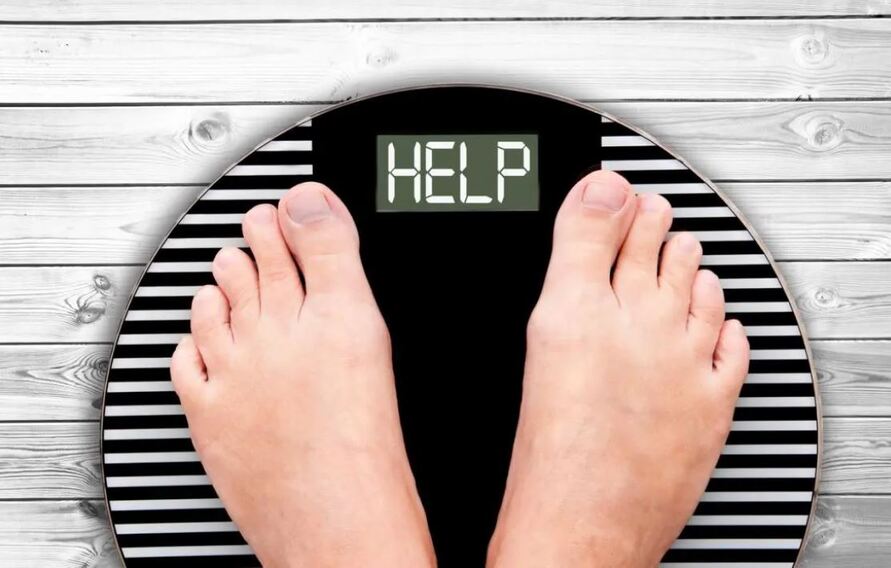Understanding Chronic Pain: Causes, Types, and Management
Chronic pain is a complex and often debilitating condition that affects millions of people worldwide. Unlike acute pain, which is a direct response to injury or illness and typically resolves once the underlying cause is treated, chronic pain persists for months or even years. This ongoing discomfort can have a profound impact on an individual’s quality of life, affecting their physical, emotional, and social well-being. In this article, we’ll explore the various aspects of chronic pain, including its causes, types, symptoms, treatment options, and management strategies.
1. What is Chronic Pain?
Chronic pain is defined as pain that lasts longer than three to six months, beyond the expected period of healing. It can result from an initial injury, such as a back sprain, or it may be associated with ongoing conditions like arthritis, cancer, or fibromyalgia. In some cases, chronic pain may occur without a clear cause, making it challenging to diagnose and treat.
How Chronic Pain Differs from Acute Pain
Acute pain is a normal sensation triggered by the nervous system to alert you to possible injury. It usually comes on suddenly and subsides once the underlying cause is treated. Chronic pain, on the other hand, persists even after the injury has healed. This prolonged pain can lead to ongoing physical discomfort, psychological stress, and a significant reduction in quality of life.
Prevalence and Impact on Quality of Life
Chronic pain is a major public health issue, affecting an estimated 20% of adults worldwide. It is a leading cause of disability, contributing to missed workdays, decreased productivity, and increased healthcare costs. Beyond the physical symptoms, chronic pain often leads to emotional and psychological challenges, including anxiety, depression, and social isolation.
2. Causes of Chronic Pain
Chronic pain can arise from various causes, including physical injuries, underlying medical conditions, and psychological factors. Understanding these causes is crucial for developing effective treatment and management strategies.
Physical Causes
Injuries and Trauma
Injuries such as sprains, fractures, or surgical incisions can lead to chronic pain if the affected area does not heal properly. Nerve damage, in particular, can result in long-lasting pain even after the initial injury has healed. Conditions like carpal tunnel syndrome, herniated discs, and repetitive strain injuries are common sources of chronic pain.
Arthritis and Joint Issues
Arthritis is one of the most common causes of chronic pain. Osteoarthritis, rheumatoid arthritis, and other forms of joint inflammation can cause persistent pain, stiffness, and swelling. These conditions are often degenerative, meaning they worsen over time, making early diagnosis and management crucial.
Nerve Damage and Neuropathy
Nerve damage, also known as neuropathy, can cause chronic pain that is often described as burning, tingling, or stabbing. Neuropathy can result from diabetes, infections, traumatic injuries, or exposure to toxins. In some cases, nerve damage occurs without an identifiable cause, a condition known as idiopathic neuropathy.
Underlying Medical Conditions
Fibromyalgia
Fibromyalgia is a chronic condition characterized by widespread pain, fatigue, and tenderness in the muscles, joints, and soft tissues. The exact cause of fibromyalgia is unknown, but it is believed to involve abnormal pain processing in the brain and spinal cord. This condition is often accompanied by other symptoms such as sleep disturbances, memory problems, and mood disorders.
Multiple Sclerosis
Multiple sclerosis (MS) is an autoimmune disease that affects the central nervous system. It can cause a wide range of symptoms, including chronic pain, muscle weakness, and coordination problems. Pain in MS may be due to nerve damage, muscle spasms, or other complications related to the disease.
Cancer Pain
Chronic pain is a common symptom in cancer patients, especially in advanced stages of the disease. Pain may result from the tumor pressing on nerves, bones, or other organs. Additionally, cancer treatments like chemotherapy, radiation, and surgery can also cause long-lasting pain.
Psychological Factors
Stress and Anxiety
Chronic pain is often linked to stress and anxiety, which can exacerbate the perception of pain. The body’s stress response, including the release of certain hormones and neurotransmitters, can amplify pain signals in the nervous system. Additionally, chronic pain can lead to increased stress and anxiety, creating a vicious cycle that can be difficult to break.
Depression and Emotional Distress
Depression is both a common cause and consequence of chronic pain. The ongoing discomfort and limitations imposed by chronic pain can lead to feelings of hopelessness, sadness, and frustration. Conversely, depression can lower pain tolerance and increase the perception of pain, further complicating treatment and management.
3. Types of Chronic Pain
Chronic pain can be classified into different types based on its source and characteristics. Understanding these types can help guide treatment and management strategies.
Neuropathic Pain
Neuropathic pain is caused by damage or dysfunction in the nervous system. It is often described as sharp, shooting, or burning and can be accompanied by sensations of tingling, numbness, or weakness. Neuropathic pain is commonly associated with conditions like diabetic neuropathy, post-herpetic neuralgia, and sciatica.
Common Conditions Associated with Neuropathic Pain
- Diabetic Neuropathy: A common complication of diabetes, characterized by nerve damage, particularly in the legs and feet.
- Post-Herpetic Neuralgia: Pain that persists after an outbreak of shingles, caused by damage to the nerves from the herpes zoster virus.
- Sciatica: Pain that radiates along the sciatic nerve, typically caused by a herniated disc or spinal stenosis.
Nociceptive Pain
Nociceptive pain results from damage to body tissues, such as muscles, bones, or organs. It is often described as aching, throbbing, or sharp and is usually localized to the affected area.
Somatic Pain (e.g., Muscle, Bone)
Somatic pain originates from the skin, muscles, joints, and bones. It is typically well-localized and can result from injuries, inflammation, or degenerative conditions like osteoarthritis.
Visceral Pain (e.g., Internal Organs)
Visceral pain arises from the internal organs, such as the stomach, intestines, or bladder. It is often described as deep, squeezing, or cramping and may be difficult to localize. Conditions like irritable bowel syndrome (IBS) and endometriosis are common sources of visceral pain.
Psychogenic Pain
Psychogenic pain is pain that is primarily associated with psychological factors, such as stress, anxiety, or depression. Although the pain is real, it may not have a clear physical cause. Psychogenic pain can be challenging to diagnose and treat, as it often involves addressing underlying emotional and mental health issues.
Connection Between Mind and Body
The connection between the mind and body is complex, and psychological factors can significantly influence the perception of pain. Techniques such as cognitive behavioral therapy (CBT), mindfulness, and relaxation exercises can help manage psychogenic pain by addressing the psychological components of the condition.
Managing Psychogenic Pain
Treatment for psychogenic pain often involves a multidisciplinary approach, including psychological counseling, pain management strategies, and lifestyle modifications. Building a supportive network of family, friends, and healthcare providers is also crucial for managing psychogenic pain.
4. Symptoms and Diagnosis
Chronic pain presents with a variety of symptoms, making diagnosis and treatment challenging. Early and accurate diagnosis is essential for developing an effective pain management plan.
Common Symptoms of Chronic Pain
- Persistent Pain: Ongoing pain that lasts longer than three to six months, often described as aching, burning, or throbbing.
- Fatigue: Chronic pain can lead to physical and mental exhaustion, making it difficult to perform daily activities.
- Sleep Disturbances: Pain can interfere with sleep, leading to insomnia, frequent awakenings, or non-restorative sleep.
- Mood Changes: Anxiety, depression, and irritability are common emotional responses to chronic pain.
- Limited Mobility: Chronic pain can restrict movement, leading to stiffness, weakness, and reduced physical activity.
How Chronic Pain is Diagnosed
Medical History and Physical Examination
The diagnosis of chronic pain begins with a thorough medical history and physical examination. The healthcare provider will ask about the onset, duration, and nature of the pain, as well as any associated symptoms. A physical examination may help identify the source of the pain and assess its impact on mobility and function.
Diagnostic Tests and Imaging
In some cases, additional diagnostic tests may be necessary to identify the underlying cause of chronic pain. These may include:
- X-rays: To assess bone and joint conditions.
- MRI or CT scans: To evaluate soft tissues, nerves, and internal organs.
- Nerve conduction studies: To assess nerve function and identify nerve damage.
Understanding Pain Scales and Assessments
Pain scales are tools used to quantify the intensity and impact of chronic pain. Common pain scales include:
- Numerical Rating Scale (NRS): Patients rate their pain on a scale of 0 to 10, with 0 being no pain and 10 being the worst possible pain.
- Visual Analog Scale (VAS): A line marked from “no pain” to “worst pain imaginable” on which patients indicate their pain level.
- McGill Pain Questionnaire: A more comprehensive assessment that includes descriptive words to characterize the pain’s quality and intensity.
These assessments help healthcare providers understand the severity of the pain and monitor its progress over time.
5. The Impact of Chronic Pain on Daily Life
Chronic pain can have a profound impact on all aspects of daily life, from physical limitations to emotional and social challenges.
Physical Limitations and Mobility Issues
Chronic pain often leads to reduced physical activity and mobility. Patients may experience stiffness, weakness, and difficulty performing everyday tasks, such as walking, lifting, or bending. Over time, these limitations can lead to muscle atrophy, joint stiffness, and further loss of function.
Emotional and Psychological Impact
The ongoing discomfort and frustration of chronic pain can lead to emotional and psychological challenges. Anxiety, depression, and irritability are common responses to chronic pain, and these emotions can further exacerbate the perception of pain. Chronic pain can also lead to feelings of isolation, as patients may withdraw from social activities and relationships.
Social and Work-Related Consequences
Chronic pain can have significant social and work-related consequences. Patients may struggle to maintain employment, leading to financial stress and loss of income. Social relationships may also suffer, as chronic pain can make it difficult to participate in social activities or maintain close connections with family and friends.
Effects on Sleep and Fatigue
Sleep disturbances are a common consequence of chronic pain. Pain can interfere with the ability to fall asleep, stay asleep, or achieve restorative sleep. This lack of quality sleep can lead to fatigue, reduced concentration, and increased sensitivity to pain, creating a cycle that can be difficult to break.
6. Treatment Options for Chronic Pain
There is no one-size-fits-all approach to treating chronic pain, as the condition is complex and multifaceted. A combination of medical treatments, physical therapies, and alternative approaches is often necessary to manage chronic pain effectively.
Medications
Medications are often the first line of treatment for chronic pain. Depending on the type and severity of the pain, different classes of drugs may be used.
Over-the-Counter Pain Relievers
- Nonsteroidal Anti-Inflammatory Drugs (NSAIDs): Medications like ibuprofen and aspirin can help reduce inflammation and relieve mild to moderate pain.
- Acetaminophen: Often used for mild pain and fever, acetaminophen is a common choice for pain relief.
Prescription Medications
- Opioids: These powerful painkillers are prescribed for severe pain, but they come with risks of addiction, tolerance, and side effects. Examples include oxycodone, morphine, and fentanyl.
- Antidepressants: Certain antidepressants, such as amitriptyline and duloxetine, are effective in treating chronic pain, particularly neuropathic pain.
- Anticonvulsants: Medications like gabapentin and pregabalin are used to treat nerve pain and are commonly prescribed for conditions like fibromyalgia and diabetic neuropathy.
Potential Side Effects and Risks
All medications come with potential side effects and risks, particularly when used long-term. Opioids, in particular, carry a high risk of dependence and should be used with caution. Other medications may cause gastrointestinal issues, drowsiness, or allergic reactions. It is important to work closely with a healthcare provider to manage these risks and adjust treatment as needed.
Physical Therapy and Rehabilitation
Physical therapy is a key component of chronic pain management. It involves exercises, stretches, and manual therapies designed to improve mobility, strength, and flexibility.
Exercises and Stretching
A physical therapist can design a personalized exercise program to help patients maintain or improve their physical function. This may include aerobic exercises, strength training, and stretching routines tailored to the patient’s specific needs and limitations.
Manual Therapy and Massage
Manual therapy, including techniques like massage, joint mobilization, and soft tissue manipulation, can help relieve pain, reduce muscle tension, and improve circulation. These therapies can also promote relaxation and reduce stress.
The Role of a Physical Therapist
A physical therapist plays a crucial role in chronic pain management. They work with patients to develop individualized treatment plans, monitor progress, and adjust therapies as needed. Physical therapists also provide education and support to help patients manage their condition and prevent further complications.
Alternative and Complementary Therapies
Many patients with chronic pain turn to alternative and complementary therapies to manage their symptoms. These approaches can be used alongside conventional treatments to enhance pain relief and improve overall well-being.
Acupuncture and Acupressure
Acupuncture and acupressure are traditional Chinese medicine techniques that involve stimulating specific points on the body to relieve pain and promote healing. Studies have shown that these therapies can be effective in reducing chronic pain, particularly in conditions like osteoarthritis and fibromyalgia.
Chiropractic Care
Chiropractic care involves spinal manipulation and other manual therapies to treat musculoskeletal pain. Chiropractors use hands-on techniques to adjust the spine and other joints, which can help relieve pain, improve mobility, and restore proper function.
Herbal Remedies and Supplements
Certain herbal remedies and dietary supplements may help manage chronic pain. For example, turmeric, ginger, and omega-3 fatty acids have anti-inflammatory properties that can reduce pain and inflammation. However, it is important to consult with a healthcare provider before using any supplements, as they may interact with other medications or have potential side effects.
Mind-Body Techniques
Mind-body techniques focus on the connection between mental and physical health. These approaches can help patients manage pain by reducing stress, improving emotional well-being, and enhancing the body’s natural pain-relief mechanisms.
Cognitive Behavioral Therapy (CBT)
CBT is a type of psychotherapy that helps patients change negative thought patterns and behaviors that can contribute to chronic pain. By addressing the psychological aspects of pain, CBT can help reduce pain intensity, improve coping skills, and enhance quality of life.
Meditation and Mindfulness
Meditation and mindfulness practices involve focusing the mind on the present moment, which can help reduce stress and anxiety. These techniques have been shown to reduce the perception of pain and improve overall well-being in patients with chronic pain.
Biofeedback and Relaxation Techniques
Biofeedback is a technique that uses electronic devices to monitor physiological functions, such as heart rate and muscle tension. By learning to control these functions, patients can reduce stress and pain. Relaxation techniques, such as deep breathing and progressive muscle relaxation, can also help alleviate pain and promote relaxation.
Surgical and Interventional Procedures
In some cases, surgical or interventional procedures may be necessary to manage chronic pain. These treatments are typically considered when other therapies have not provided sufficient relief.
Nerve Blocks and Injections
Nerve blocks and injections involve delivering medication directly to the affected area to block pain signals. Examples include epidural steroid injections, facet joint injections, and nerve root blocks. These procedures can provide temporary pain relief and reduce inflammation.
Spinal Cord Stimulation
Spinal cord stimulation involves implanting a device that delivers electrical impulses to the spinal cord, interrupting pain signals before they reach the brain. This technique can be effective in managing chronic pain, particularly for patients with neuropathic pain.
When Surgery is Considered
Surgery is typically considered as a last resort for chronic pain management. It may be recommended for conditions like herniated discs, spinal stenosis, or joint degeneration when other treatments have failed. The decision to undergo surgery should be made in consultation with a healthcare provider, taking into account the potential risks and benefits.
7. Chronic Pain Management Strategies
Effective chronic pain management requires a comprehensive approach that addresses physical, emotional, and lifestyle factors.
Lifestyle Modifications
Lifestyle changes can play a significant role in managing chronic pain. By adopting healthy habits and making adjustments to daily routines, patients can improve their overall well-being and reduce pain.
Exercise and Physical Activity
Regular physical activity is essential for managing chronic pain. Exercise helps maintain flexibility, strength, and mobility, while also reducing inflammation and promoting the release of endorphins, the body’s natural painkillers. Patients should work with a healthcare provider to develop a safe and effective exercise plan that meets their needs.
Nutrition and Diet
A balanced diet can support overall health and reduce chronic pain. Certain foods, such as those rich in antioxidants, omega-3 fatty acids, and anti-inflammatory compounds, can help reduce inflammation and pain. It is also important to maintain a healthy weight, as excess weight can put additional strain on the joints and muscles.
Sleep Hygiene and Routine
Good sleep hygiene is crucial for managing chronic pain. Establishing a regular sleep routine, creating a comfortable sleep environment, and avoiding stimulants before bedtime can improve sleep quality and reduce pain. Patients should also consider relaxation techniques, such as meditation or deep breathing, to help them unwind before bed.
Pain Management Plans
A personalized pain management plan is essential for effectively managing chronic pain. This plan should include a combination of treatments, lifestyle changes, and coping strategies that address the patient’s specific needs.
Setting Realistic Goals
Setting realistic goals is important for managing chronic pain. Patients should work with their healthcare provider to set achievable objectives, such as improving mobility, reducing pain intensity, or increasing physical activity. These goals should be regularly reviewed and adjusted as needed.
Monitoring and Adjusting Treatments
Chronic pain management is an ongoing process that requires regular monitoring and adjustments. Patients should keep a pain diary to track their symptoms, medications, and treatments. This information can help healthcare providers assess the effectiveness of the treatment plan and make necessary changes.
Working with a Multidisciplinary Team
Managing chronic pain often requires a multidisciplinary approach, involving a team of healthcare providers, including doctors, physical therapists, psychologists, and nutritionists. This team works together to develop and implement a comprehensive treatment plan that addresses all aspects of the patient’s condition.
Support Systems
Support systems are crucial for managing chronic pain. Patients should seek support from family, friends, and healthcare providers to help them cope with the challenges of chronic pain.
Role of Family and Friends
Family and friends play an important role in providing emotional and practical support to patients with chronic pain. They can offer encouragement, assist with daily tasks, and help the patient stay motivated and engaged in their treatment plan.
Support Groups and Communities
Support groups and online communities can provide valuable resources and support for patients with chronic pain. These
groups offer a space for patients to share their experiences, learn from others, and access information about new treatments and coping strategies.
8. Living with Chronic Pain
Living with chronic pain requires ongoing effort and adaptation. Patients can lead fulfilling lives by implementing effective pain management strategies and maintaining a positive outlook.
Coping Strategies
Developing effective coping strategies is essential for managing the emotional and psychological challenges of chronic pain.
Mindfulness and Meditation
Mindfulness and meditation practices can help patients focus on the present moment and reduce the emotional impact of chronic pain. These techniques can promote relaxation, reduce stress, and improve overall well-being.
Cognitive Behavioral Techniques
Cognitive behavioral techniques, such as reframing negative thoughts and setting achievable goals, can help patients cope with the psychological aspects of chronic pain. These techniques can also improve pain management by changing the way patients perceive and respond to pain.
Engaging in Hobbies and Interests
Engaging in hobbies and interests can provide a distraction from pain and improve quality of life. Patients should explore activities that they enjoy and that are compatible with their physical limitations, such as reading, gardening, or painting.
Maintaining a Positive Outlook
Maintaining a positive outlook is crucial for managing chronic pain. Patients should focus on their strengths, celebrate small victories, and seek out positive experiences.
Finding Meaning and Purpose
Finding meaning and purpose in life can help patients cope with chronic pain. Whether through work, volunteering, or personal relationships, patients should strive to find activities that give them a sense of purpose and fulfillment.
Celebrating Small Victories
Celebrating small victories, such as achieving a personal goal or completing a task, can boost morale and motivate patients to continue their efforts in managing chronic pain.
Future Outlook and Advancements in Chronic Pain Management
The field of chronic pain management is constantly evolving, with new treatments and therapies being developed. Patients should stay informed about the latest advancements and work with their healthcare providers to explore new options.
9. Conclusion
Chronic pain is a complex and challenging condition that requires a comprehensive and individualized approach to management. By understanding the different types of chronic pain, recognizing its symptoms and impacts, and exploring the various treatment options, patients can take an active role in managing their condition. With the right support, lifestyle changes, and coping strategies, it is possible to live a fulfilling life despite the challenges of chronic pain.




